![]()
|
Charles
Meigh |
Location and period of operation:
|
Charles Meigh |
Hanley |
1835 |
1849 |
Earthenware manufacturer at the Old Hall Works, Hanley, Stoke-on-Trent
Charles Meigh was the second son of the potter Job Meigh.
In 1829 Charles Meigh held the office of Chief Baliff of Hanley and Shelton
Around 1834 his home 'Grove House' was built.
Previously: Job Meigh & Son
Subsequently: C Meigh, Son & Pankhurst
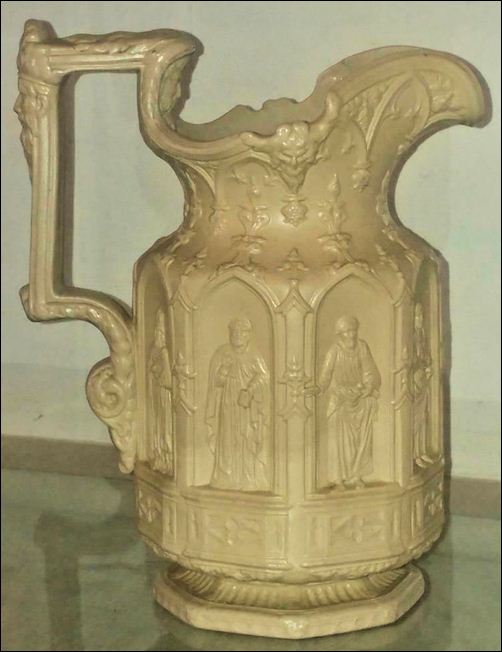
Charles Meigh smear-glazed
stonware 'Apostle jug'
c.1842
| "This jug has been relief moulded; a mass-production technique which involved one process, using elaborate plaster moulds, with no extra work required for adding decoration. Such wares could thus be produced in large numbers and were affordable and durable. Jugs, such as this one, were amongst the most widely used utilitarian vessels of the Nineteenth century; decorative as well as practical. Many different firms produced them and hundreds of different designs existed, as the competition to supply the cheap mass market was intense. Often the same design was produced in different sizes. This 'apostle' jug, in the Gothic style, is one of the most iconic and successful of relief-moulded jug designs and depicts figures in architectural niches. It has an applied registration mark on its base, which tells us that the design was logged at the Design Registry, established in 1839 to protect original work from being copied." Victoria & Albert Museum |
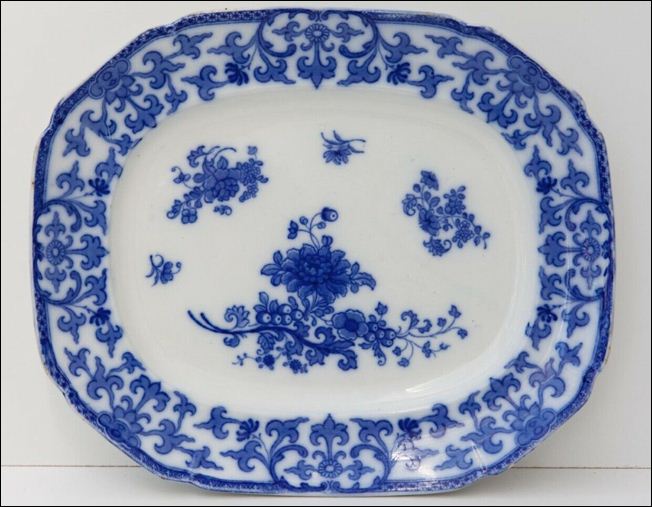
blue & white platter
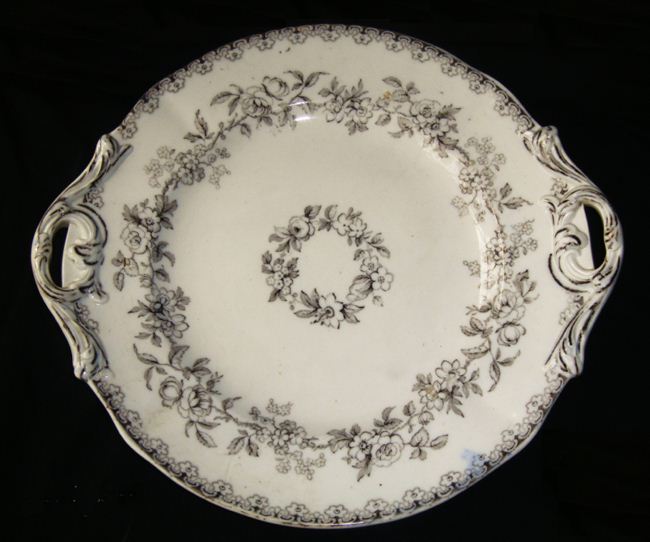 transferware charger plate |
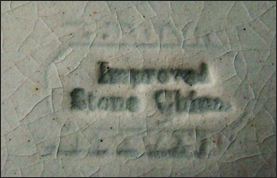 Improved Stone China |
photos courtesy: Patrick Carey
Initials & names used on ware for identification:
C M
CHARLES MEIGH
PORCELAIN OPAQUE
OPAQUE PORCELAIN
IMPROVED STONE CHINA
ENAMEL PORCELAIN
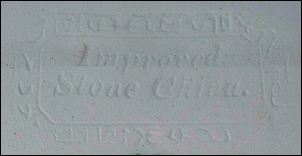
Improved
Stone China
impressed mark
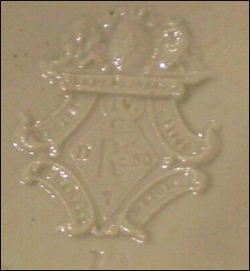
Charles Meigh
applied moulded mark
many Charles Meigh marks
incorporate the registration diamond
or the date of registration.
These marks occur on ornate moulded ware of the 1840's
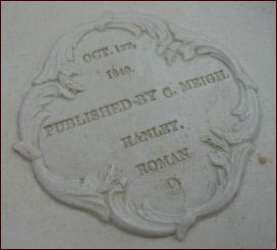
Oct 1st
1840.
Published by C Meigh.
Hanley.
Roman
applied moulded mark
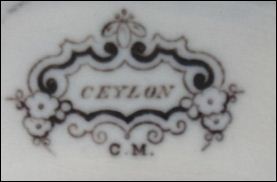
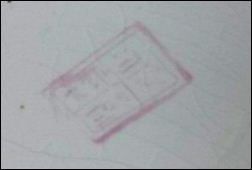
CEYLON
C.M.
these two marks appear on the same plate
'CEYLON' is the pattern name
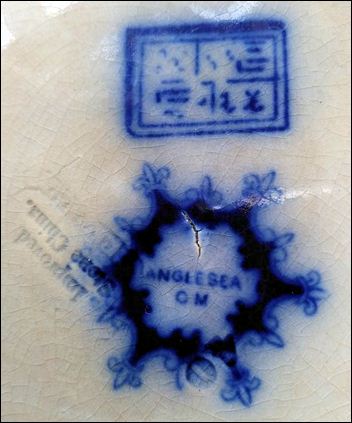
Improved
Stone China
(impressed)
C M
'ANGLESEA' is the pattern name
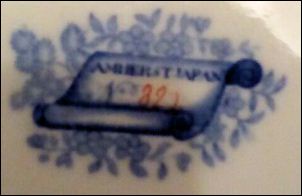
Amherst Japan

shown above are examples of
marks used by
Chinese
porcelain manufacturers
The Meigh family (& other
potters) added similar
marks to their ware to give the impression of the orient
to their ware even though it was produced in England.
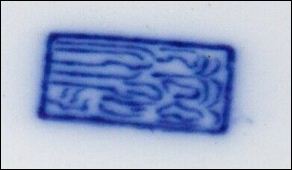
this style of mark was also used
by Job Meigh & Son and Charles Meigh & Son
 |
 Improved Stone China around the border: Meigh Hanley other wording included "Indian Stone China" or "French China" |
 Enamel Porcelain |
marks recorded in Godden's 'Encyclopaedia of British Pottery and porcelain Marks'
these style of marks were also used by Job Meigh & Son and Charles Meigh & Son
- click for more information on the Old Hall Works -
Questions, comments, contributions? email: Steve Birks